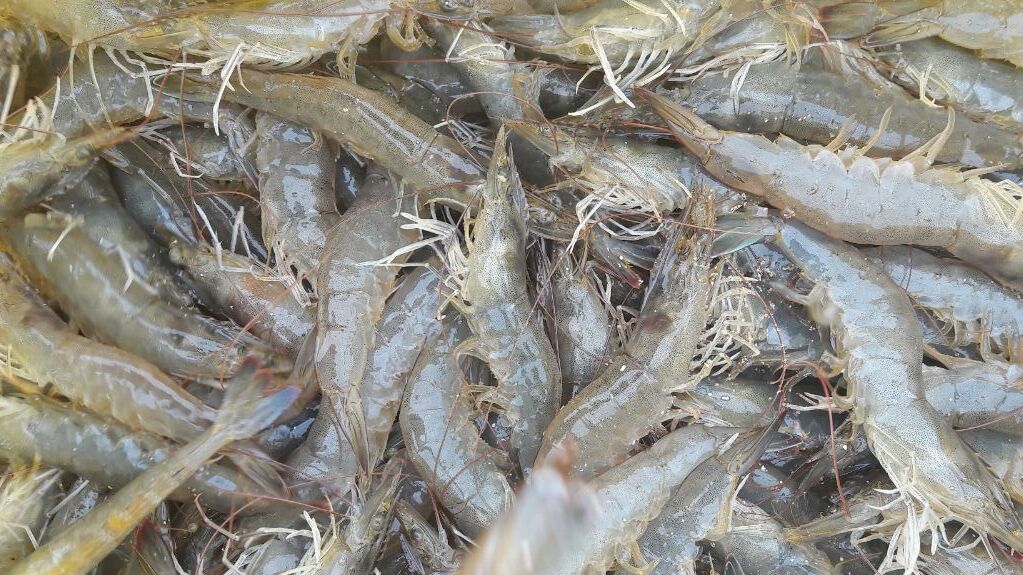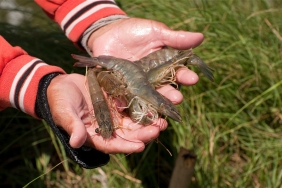INITIAL ASSESSMENT OF THE MSC ECOLABEL STANDARD FOR SHRIMP FISHERIES IN KOTABARU
By: Faridz Rizal Fachri (Capture Fisheries Officer)
Certification of environmentally friendly and sustainable fisheries products is an approach that positions the market as the key influencer of global fisheries activities. WWF-Indonesia refers to Marine Stewardship Council (MSC) standards as the ideal criteria for sustainable fisheries management through the implementation of the Fisheries Improvement Program (FIP), which is based on three sustainable principles, namely stock sustainability (P1), minimizing environmental impacts (P2), and effective management (P3). According to the MSC's 2015 Annual Report, out of a total of 286 MSC-certified fisheries in the world, there is still no representation from the Indonesian fisheries sector. Whereas the potential economic value arising from ecolabel certified fishery products reaches US$4.6 billion.
The initial assessment of fisheries that became MSC's Unit of Assessment (UoA) was conducted on November 3-9, 2016 for shrimp fisheries in Kotabaru, South Kalimantan. This was conducted with third-party auditors for MSC certification in Indonesia, Dr. Zairion and Dr. Diah Permata. The assessment was conducted through in-depth interviews involving influential parties in the management of shrimp fisheries, namely the Maritime Affairs and Fisheries Office, fisheries extension workers, entrepreneurs, and fishermen, focusing on the shrimp fishery center in Rampa Lama Village, North Laut Island District, Kotabaru, South Kalimantan.
The shrimp commodity is an economic driver in Kotabaru as seen from the production of captured shrimp reaching 4,930.5 tons in 2015 (Kotabaru in figures, 2015), the highest of other marine products. The availability of shrimp stock data has an important position as the basis for the preparation of shrimp fishing regulations, this shows the relationship between stock sustainability (P1) to policies in regulating shrimp fisheries (P3) in Kotabaru. The unavailability of data on the production of various types of shrimp caught is a major concern in future improvement programs. Another very important thing is the determination of the UoA of shrimp fisheries, because it has been identified that there are two fishing gears used by fishermen, namely from gondrong nets (trammel net), and basic lampara (mini trawl), of course this affects the analysis of the catch composition of each fishing gear because it contributes to habitat and ecosystem impacts (P2), especially the zoning arrangement of fishing areas is not yet available, so they overlap with each other.
The type of shrimp used as raw material for the industry is lampis shrimp caught using basic lampara, with the composition of other fish species that are caught quite a lot, more than 10 species. A more selective gear operation is the gondrong net, with 85% of the catch composition dominated by white shrimp (Panaeus marguiensis), with the rest from crab and mackerel. White shrimp is the main export commodity to the China and Japan markets, while peeled lampis shrimp to fulfill the domestic market with market destinations to the East Java region via Banjar Regency, South Kalimantan.
Looking at these results, there are recommendations for UoA that are encouraged to obtain MSC certification, including: changing the use of the main raw material from lampis shrimp to white shrimp, or changing the lampis shrimp fishing gear, namely basic lampara to more environmentally friendly fishing gear. Considering also that the basic lampara includes mini trawl which conflicts with KP Decree No. 2 of 2015. The results of this initial assessment will be communicated to partner companies that will be/are already members of Seafood Savers, and gaps will be filled through FIP implementation before the MSC full-assessment is conducted. WWF-Indonesia as a technical assistance is committed to be the most appropriate partner for the company to achieve MSC certification in the future. Two-way coordination between the company, Seafood Savers and WWF-Indonesia is needed to maintain a joint commitment towards sustainable utilization of fisheries resources in Indonesia.





